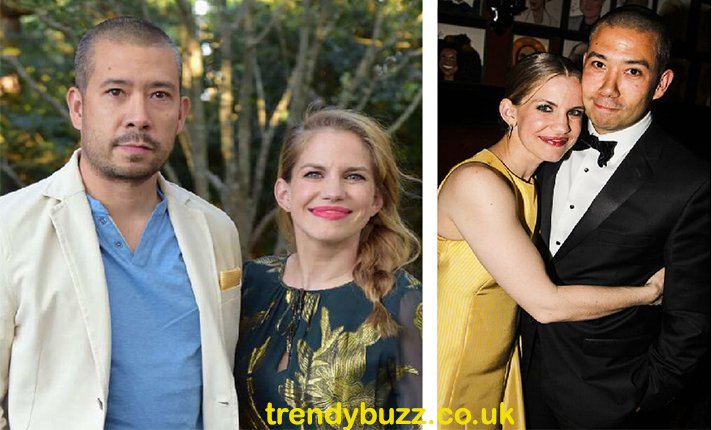Shaun So is the kind of person who quietly threads into other people’s headlines rather than seeking them out himself. He’s best known to many as the husband of actress Anna Chlumsky, but his life before and alongside that relationship — a decade in uniform, a shift into entrepreneurship, and a steady role as a partner and parent — is worth a closer look. This article pulls together what’s publicly known about So and paints a picture of someone who has moved deliberately from public service into building things in the private sector.
Early life and the path to service
Unlike the celebrity biographies that dominate search results, So’s early years are sparsely documented in mainstream outlets. What is clear from his own website and public profiles is a foundation that combined practical experience with formal education, and a willingness to try different roles — from market research to public sector work. He has mentioned ties to Maine and lists a variety of employers and projects in his career summary, which suggests a non-linear path rather than a single, neatly defined career track.
So’s military service is better documented. He served in the U.S. Army Reserve and worked in military intelligence roles, including time linked to counterintelligence and deployments. That period of his life had a concrete impact on his personal story: it was a deployment to Afghanistan and the stresses of long-distance relationships during that time that he and Anna Chlumsky navigated before they eventually married. Reporting and profiles of Chlumsky have repeatedly described the strain and the eventual reunion that followed his return.
From uniform to startups
After his active service years, So pivoted toward work in the private sector and entrepreneurship. Publicly available company profiles and interviews list a handful of ventures he has been involved with, including The So Company and earlier projects such as Cubby. He describes his work as market exploration and research — in other words, building small teams to identify product-market fit rather than being a public-facing CEO focused on press coverage. That background fits a growing cohort of former public servants who apply analytic skills and operational experience to start-ups and consultancy.
What stands out in his transition is the combination of discipline and curiosity. Military intelligence work requires structured analysis and attention to detail; entrepreneurship requires experimentation and tolerance for ambiguity. Those two modes don’t always live comfortably together, but So’s public-facing descriptions imply he’s been able to leverage the discipline of his past into pragmatic product and market experiments. Profiles that focus on his business side tend to emphasize small, deliberate moves rather than rapid-fire scaling or headline-grabbing exits.
Family life and public profile
Shaun So’s public identity is inseparable from his family life with Anna Chlumsky. The couple met as students at the University of Chicago, endured long-distance stretches while So served overseas, and married in 2008. They have built a relatively private family life in the years since, raising two daughters while both parents continued to pursue demanding careers. Chlumsky has written and spoken publicly about the experience of being a military partner and the anxieties that accompany reintegration after a deployment — details that underscore how their private life has shaped their public perspectives.
Because So tends not to seek media attention, most profiles of him are framed through Chlumsky’s interviews or through short biographical pieces. That dynamic helps explain why many articles emphasize his status as a veteran and entrepreneur rather than offering a beat-by-beat account of his companies. Still, the consistent threads across reliable sources are clear: he is a veteran, an entrepreneur who runs or has run small companies, a college meet-cute with his wife, and a father.
What people miss when they only skim the headlines
It’s easy to reduce Shaun So to a “celebrity spouse” label, but that shorthand misses two useful things. First, it obscures the reality that many people who support public figures have careers and histories that stand on their own merits. So’s decade in military service and the switch to entrepreneurship reflect skills — leadership under pressure, analytic thinking, product curiosity — that are widely transferable and valuable, even if they don’t come with constant press coverage. Second, the choice to lead a lower-profile life alongside a high-profile partner is itself a kind of career decision: it shapes how you start companies, whom you hire, and how public you allow your work to be.
Why his story matters
There are two small but meaningful lessons in So’s arc. The first is about adaptation: careers no longer follow a single arc, especially for people who leave public service. The second is about partnership and trade-offs — the decision to prioritize family privacy while still engaging in meaningful work can look like stepping out of the spotlight, but it’s often an intentional strategy that enables both partners to do sustained, focused work. For readers who follow the human side of public life, So’s life offers a practical example of how to balance service, entrepreneurship, and family without making any one thing a headline at the expense of the others.
Closing: a quieter kind of footprint
Shaun So doesn’t dominate search engines in the way many entrepreneurs or veterans-turned-founders do, and that’s part of the point. His public footprint is modest by design: a portfolio of ventures, a history of service, and a family life that occasionally appears in profiles of Anna Chlumsky. When you piece those elements together, you get a consistent portrait — someone who moved from service to private-sector problem solving, who values family privacy, and who applies a practical, methodical approach to whatever he takes on next. For anyone interested in lives that run parallel to the spotlight rather than through it, his story is quietly instructive.
